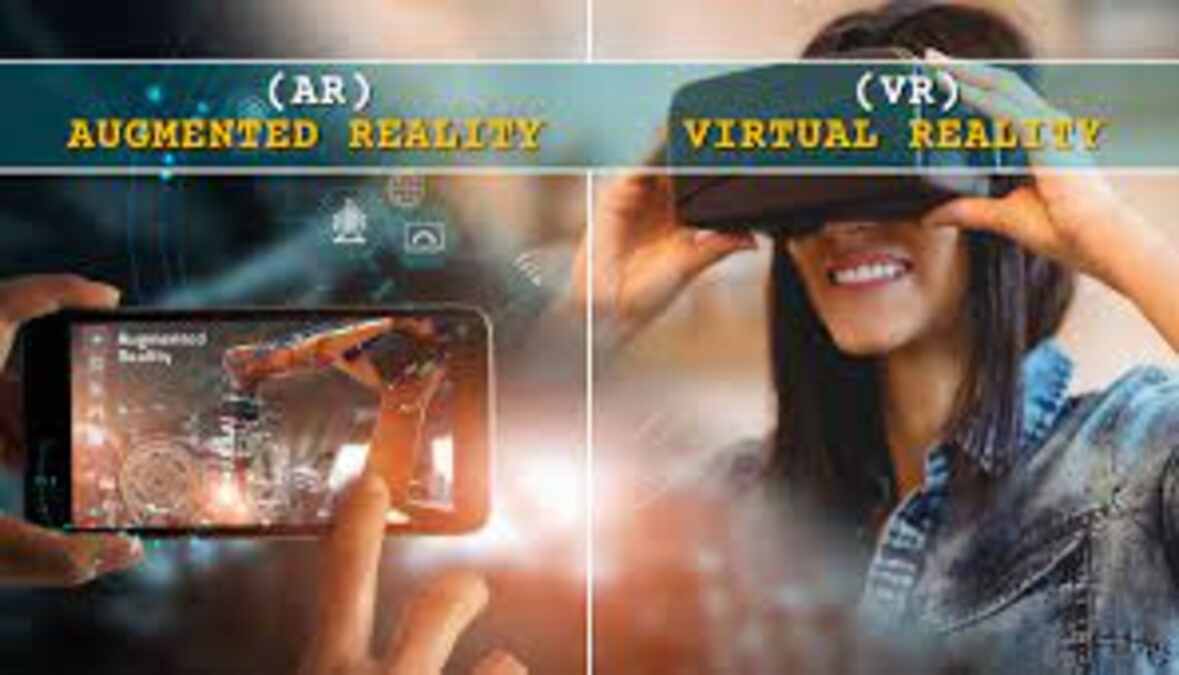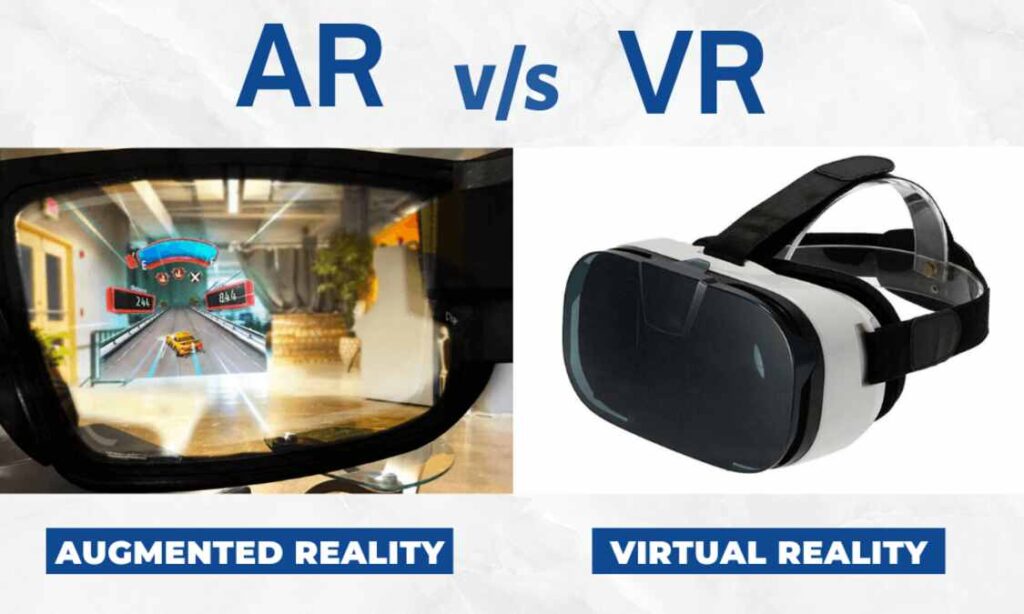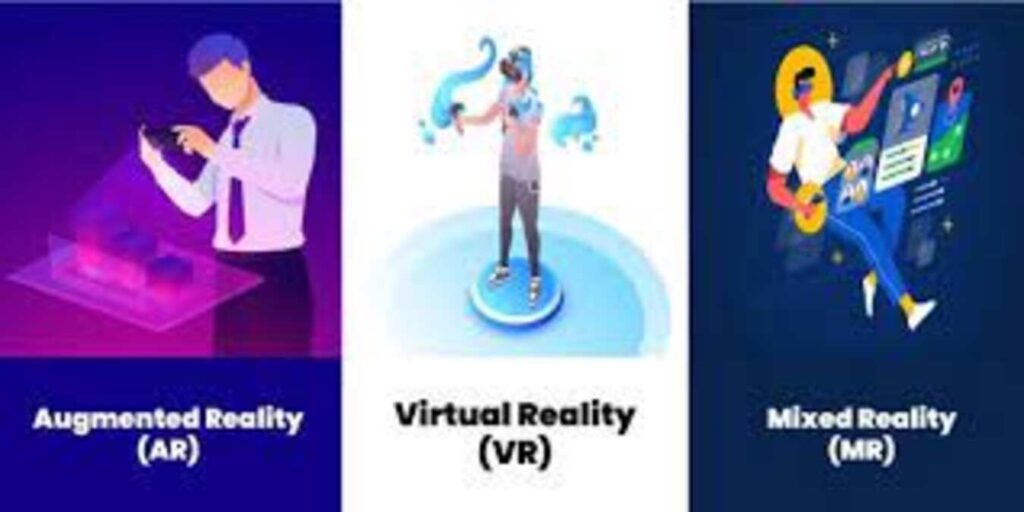Virtual vs. Augmented Reality: The Best Powerful Comprehensive

Virtual vs. Augmented Reality in today’s rapidly evolving digital landscape, two groundbreaking technologies. Are reshaping the way we interact with the world: Virtual Reality (VR) and then Augmented Reality (AR). Both technologies, although similar in concept, provide entirely different experiences and then serve distinct purposes. Adding to the complexity is the rise of decentralization, a concept rooted in blockchain technology. That promises to reshape the control and then governance of these virtual platforms. In this article, we explore the intersections of decentralization with virtual reality and augmented reality, analyzing how these combinations are transforming industries, enabling new possibilities, and then fostering innovation.
Understanding Virtual Reality (VR) and Augmented Reality

Before diving into the comparison, it’s essential to understand then core concepts of VR and AR.
What is Virtual Reality (VR)? Virtual vs. Augmented Reality
Virtual reality immerses users into a completely digital environment, blocking out the real world entirely. Users experience this new environment through specialized hardware such as VR headsets (e.g., Oculus Rift or HTC Vive) that simulate three-dimensional space, enabling full immersion into a digitally created environment. This technology is widely used in gaming, simulation training, and then immersive experiences where a complete digital overhaul of reality is essential.
What is Augmented Reality (AR)?
Unlike VR, Augmented Reality overlays digital elements on top of the real world, enhancing the physical environment with computer-generated imagery. Devices such as smartphones, tablets, and then AR headsets (e.g., Microsoft HoloLens or Google Glass) are used to blend the physical and then virtual worlds. AR applications are seen in fields like retail, education, medical training, and then navigation, where users benefit from both their real-world surroundings and then interactive virtual objects.
The Role of Decentralization in Virtual vs. Augmented Reality
What is Decentralization?
At its core, decentralization refers to the redistribution of authority from a central entity to a network of independent users or nodes. This principle is most commonly associated with blockchain technology, where decentralized networks power cryptocurrencies like Bitcoin and then decentralized applications (dApps). When applied to virtual and thdn augmented reality, decentralization allows for open governance, enhanced privacy, and then user-owned data, contrasting sharply with traditional centralized platforms.
Decentralization and VR Virtual vs. Augmented Reality
In virtual reality, decentralization opens the door to user-controlled virtual worlds. Blockchain-based VR platforms like Decentraland Somnium Space enable users to own digital land, create content, and then participate in governance decisions through decentralized autonomous organizations (DAOs). This form of user empowerment shifts control from corporate entities to individuals, allowing for a more democratic and then transparent experience. Decentralized VR can be seen as the next frontier of the metaverse, offering not just immersive experiences but also ownership over digital assets and then spaces.
Decentralization and AR
While AR is typically less immersive than VR, decentralization can also still play a pivotal role. Decentralized AR platforms could enable users to control their data, participate in open-source AR projects, and engage with location-based digital overlays created by other users. By leveraging blockchain, AR apps could also allow users to verify the authenticity of digital objects and share real-time experiences in a secure, trustless environment. This can also lead to more collaborative, decentralized ecosystems where the boundaries between virtual and physical spaces are seamlessly blended.
Decentralized Virtual vs. Augmented Reality: Advantages and Applications
Enhanced Privacy and Data Ownership
One of the most significant advantages of decentralized virtual reality is the promise of enhanced privacy. In traditional VR platforms, user data is often collected, stored, and monetized by centralized companies. Decentralized VR, on the other hand, offers secure peer-to-peer interactions, where personal data is encrypted and stored across a distributed ledger. Users maintain control over their own information, preventing third-party access and reducing privacy concerns.
Monetization Opportunities Virtual vs. Augmented Reality
Decentralized VR platforms provide creators with new ways to monetize their content. Users can also buy and sell virtual land, trade in-game assets, and create digital content that others can also purchase. In decentralized VR worlds, the ownership of virtual property is recorded on the blockchain, ensuring transparent and verifiable transactions. This new economic model is particularly appealing to content creators, game developers, and entrepreneurs looking to capitalize on the metaverse economy.
Decentralized Governance
Another core benefit of decentralization in VR is community governance. Traditional platforms often have centralized control, where decisions are made by a small group of individuals. In decentralized VR worlds, governance is determined by DAOs, where participants vote on key decisions regarding platform development, content moderation, and economic policies. This democratic system empowers users to shape the direction of the platform and ensures that the community’s interests are prioritized.
Interoperability and Open Standards
Decentralization can also also foster interoperability between different VR platforms. Instead of being confined to a single ecosystem, users can also take their virtual assets across multiple decentralized platforms, creating a more unified metaverse. Open standards enabled by blockchain protocols make it easier for developers to build cross-platform experiences, allowing users to engage with a broader array of content.
Decentralized Augmented Reality: Opportunities and Use Cases

User-Created AR Environments
In a decentralized AR system, users could create and share location-based digital overlays. Imagine a world where anyone could annotate physical spaces with virtual information, and those annotations would be visible to others through their AR devices. By removing centralized control, users gain the power to shape and enrich the AR experiences around them.
Ownership of Digital Assets Virtual vs. Augmented Reality
Just like in VR, blockchain enables ownership of digital objects in AR. Whether it’s virtual art displayed in an augmented gallery or location-specific collectibles, decentralization ensures that these items are owned and controlled by the users. Smart contracts ensure transparent and secure exchanges, allowing users to trade digital assets without intermediaries.
Collaboration and Open Innovation
Decentralized AR could lead to the creation of open-source, collaborative projects where users contribute to building a shared augmented environment. Blockchain technology allows for transparent attribution of contributions, ensuring that creators receive recognition and compensation for their work. This model can also foster a more innovative and inclusive AR ecosystem, where contributions come from a global pool of creators.
Enhanced Security and Authenticity
In the context of AR, verifying the authenticity of digital objects is crucial, especially when augmented elements interact with real-world locations. Blockchain’s immutable ledger provides an auditable trail of ownership and authenticity, reducing the risk of counterfeit digital items. This is especially important in industries such as retail, where augmented reality is being used to sell digital collectibles and enhance customer experiences.
Challenges of Decentralization in VR and AR
Despite the numerous advantages of decentralization in virtual and augmented reality, there are still challenges that need to be addressed.
Scalability Issues
Blockchain-based decentralized platforms often face issues with scalability, particularly when it comes to processing large amounts of data in real-time. This can also lead to slower transaction speeds and higher costs, making it difficult for decentralized VR and AR systems to compete with their centralized counterparts in terms of performance and user experience.
Complex User Experience Virtual vs. Augmented Reality
The current state of decentralized platforms may pose challenges for mainstream adoption. Users need to have a basic understanding of blockchain technology, wallets. The cryptocurrency transactions to navigate decentralized VR and AR platforms effectively. Until the user experience becomes more intuitive, it may hinder mass adoption.
Regulatory Concerns
As with all blockchain-based systems, decentralized VR and AR platforms may face regulatory hurdles. Governments and institutions around the world are still grappling with how to regulate decentralized platforms, particularly when it comes to data privacy, intellectual property rights, and taxation. These uncertainties can also create barriers for the growth of decentralized VR and AR ecosystems.
Future Trends: Decentralization, AI, and the Metaverse Virtual vs. Augmented Reality
The future of decentralized VR and AR will likely be influenced. The convergence of multiple emerging technologies, including AI, IoT (Internet of Things), and 5G. As AI continues to evolve, we can also expect more intelligent virtual environments that are tailored to users’ needs. The decentralized metaverse, where AI and decentralized VR/AR seamlessly integrate, will offer unprecedented personalization and autonomy.
As 5G networks expand globally, decentralized AR and VR platforms will benefit from reduced latency and faster data processing, allowing for more immersive and responsive experiences. This technological synergy will drive the next wave of innovation in the decentralized digital world.
Conclusion Virtual vs. Augmented Reality
The marriage of decentralization, virtual reality, and then augmented reality marks. A significant leap in how we interact with digital and then physical environments. Decentralized platforms empower users with ownership, control, and then monetization opportunities in both VR and then AR ecosystems. While challenges like scalability and then regulatory uncertainty remain. The potential for democratic governance, enhanced privacy, and then interoperability makes decentralization a promising path forward. As we move closer to the realization of the metaverse, decentralization will play a crucial role in shaping its future.
Read more: Blockchain Virtual vs. Augmented Reality





